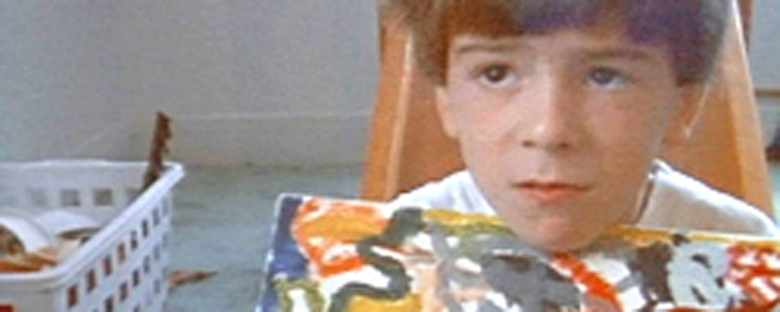One of the potential strengths of any documentary, is that
the process of making it forces the maker to reflect more deeply on the concept
they are illustrating than they may have had cause to using other mediums. In
the process of constructing an intentional metaphor, the many creative
decisions that fall to the filmmaker are also positioned to ask the filmmaker
many difficult questions about what they are trying to communicate.
Bill Nichols
noted,
“One… generalization about recurring topics
in documentaries is that they involve those concepts and issues we need
metaphors to describe.” This common use of the medium, to use images, subjects,
juxtapositions, and audience expectations to initiate a discussion about
otherwise abstract ideas, is inherent in the nature of storytelling, and doubly
inherent in the nature of telling “true” stories.
As was discussed by Nichols and by Broderick Fox
,
there are a number of fluidly categorized ways – modes – that filmmakers
regularly use to present these stories or ideas to their audiences.
For this project,
given the logistic constraints (mainly of time) involved in the
undertaking, it seemed to be in my best interest to make as many decisions
before shooting as possible. This pre-meditated approach lent itself to an
essayistic mode, combining elements of the poetic, reflexive, performative, and
autobiographical modes.
The poetic mode is
perhaps an unavoidable component of essayistic documentary. Nichols said that in poetic mode, “The
filmmaker engage[s] with the film form as much as or more than with social
actors.” This prevalence of form over
subject was also a component of the essayistic mode insofar as it was explored
in class. The subject, in this case
myself, becomes less important than the idea, or affect being emphasized by the
filmmaker’s creative decisions.
There are reflexive moments in this project where the
presence of the camera and its operator are acknowledged, as well as a certain
thematic reflexivity, wherein “Reflexive documentary sets out to readjust the
assumptions and expectations of its audience, more than to add new knowledge to
existing categories.” (Nichols)
Large portions of this project became performative, largely
out of necessity. In order to capture
the appropriate tasks and actions for this essay, many of them had to be
staged. They were all things that happen
regularly without the camera present, but because it was my own life, there was
no way to enter the space and capture those tasks in an observational
style. In some cases I was able to turn
a camera on to capture something that was happening anyway (making my bed) but
in other cases I had to stage actions, because capturing them otherwise proved
prohibitive. (The laundry basket being filled was clearly staged. Leaving my camera set up in the hall to
capture an actual time lapse would almost certainly lead to the death of said
camera.)
But the performative mode isn’t employed merely because of
staged tasks, it’s also relevant because the staged tasks are illustrating a
hypothetical idea that would be difficult to convey without some kind of
embodied subject. But given the nature
of that idea and the way it is communicated, the fidelity of the featured
actions has little weight to the validity of the complete piece. In this case,
performative documentary “demonstrate[s] how embodied knowledge provides entry
into an understanding of the more general processes at work in society.”
(Nichols)
The Autobiographical elements of this film are pretty
overt. The voiceover is my voice, my
words, speaking in the 1st person about my own experience. (Though through the process of recording it
multiple times and never liking how it turned out, I’m finding out how
subjective and constructed that can be.)
I am the subject of many of my shots, and nearly all of the content
comes from the context of my day-to-day life. I think this piece imperfectly
fits Fox’s parameters for Autobiographical documentary, that ”baring one’s self
to the public is at the heart of the autobiographical mode. The emotional and
personal life experiences of the producer become the documented reality.” I don’t feel that I was able to be as raw or
vulnerable as the “best” autobiographical documentaries defined by Fox, wherein
“the autobiographical mode not only closes the gap between photographer and
subject, but also the space between filmmaker and audience – brought together
through a subjective familiarity and an invitation to know the “I “ behind the
camera.“
Because of that, I feel comfortable describing this piece as
primarily essayistic. Fox said that
essayistic mode is “an active one, in which a proposed idea or question is
tested by a range of means and intersecting lines of argument.” This film does not entirely fit the template
of “an experiment” as outlined by Fox, but it does explore an idea
thematically, rather than a story chronologically.
If the “written or documentary essay hinges upon integrating
personal experience, history, and social critique with taut, kinetic
progression toward a synthesizing claim.” (Fox) then I think that is where this
piece ultimately fits best. The
synthesizing claim made here is a pretty abstract idea, and a lot of the nuance
of it is communicated non-verbally. But ultimately, the entire film progresses
to support a reflection on it. (At least
that was my intent.)
My intent, if it is relevant for a viewer, was to compose a
media essay about how and whether there is value in repeated, prosaic
tasks. Such endeavors make up a majority
of my days and this created for me a meaningful way to reflect on content I had
suitable access to for filming. This
project allowed me to further a democratizing idea that acts don’t have to be
extraordinary to be worth telling a story about.
Nichols, Bill. Introduction to
Documentary. 2nd ed. Bloomington: Indiana UP, 2010. Print.




